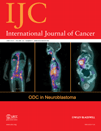Comparison of HPV and cytology triage algorithms for women with borderline or mild dyskaryosis in population-based cervical screening (VUSA-screen study)†
Conflict of interest: CJLM is a member of the advisory board of Qiagen (formerly Digene) and received lecture fees from GSK. PJFS provided occasional consultation to Roche and Gen-Probe. Qiagen, Gen-Probe and Roche are companies involved with HPV diagnostics. RHMV received lecture fees from GSK and is a member of the advisory board of Pantarhei.
Abstract
We studied the effectiveness of high-risk human papillomavirus (hrHPV) triage for immediate colposcopy in women with borderline or mild dyskaryosis (BMD). In the Utrecht province of the Netherlands, women aged 30–60 years who participated in the regular cervical screening programme were offered hrHPV testing and cytology (intervention group) or cytology only (control group). In the intervention group (n = 337), women with BMD were immediately referred for colposcopy only if the sample was hrHPV positive. Women with a hrHPV negative test were advised to repeat cytology at 6 and 18 months and were referred for colposcopy if and when the repeat test result was positive (BMD or worse). In the control group (n = 329), referral of women with BMD was delayed until cytology was repeatedly positive at 6 or 18 months. The CIN3 detection rates were 10.7% (36/337) in the intervention group and 6.4% (21/329) in the control group (p = 0.047). Moreover, hrHPV triaging resulted in shorter time to diagnosis (154 vs. 381 days). Although the number of colposcopy referrals was 51.5% higher in the intervention group than in the control group, the medical costs per detected CIN3 were slightly lower ([euro] 4781 vs. [euro] 6235). If, in addition, hrHPV negative women had been referred back to routine screening at baseline, the CIN3 rate would have been 10.1% (34/337) and colposcopy rate would only have been 30.4% higher than in the control group. This study shows that hrHPV triaging of women with BMD is at least as effective for detecting CIN3 as repeat cytology, also when hrHPV negative women are referred back to routine screening.




